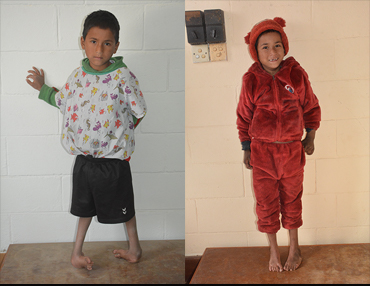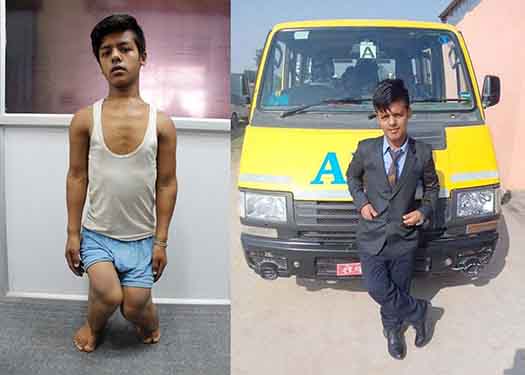Surgical Procedures
Clubfoot is a condition where the foot is turned inwards and downwards so that the sole cannot be placed flat on the ground, in other words the child will not be able to walk properly, in addition to hav-ing a hard time finding footwear. If left untreated, the deformity worsens and the foot stiffens up making treatment more difficult and invasive, in addition to providing a more suboptimal result.
At HRDC, we use the Ponseti method which is a (non-invasive) method that uses serial plaster casts to correct the deformity.This is followed by a minor surgical procedure to loosen the tight heel cord. For those children that present late for treatment, surgical correction is also offered at HRDC.
HRDC treats one of the highest numbers of clubfeet in the world. The poor socio-economic situation in Nepal, also makes preventable physical disability like clubfoot the most common condition that we treat in the field and at our hospital.
Cerebral Palsy is an impairment of muscular function and weakness of the limbs, caused by lack of oxygen to the brain immediately after birth, brain injury during birth, or an infection. Often accompanied by poor motor skills, it sometimes involves speech and learning difficulties.
The HRDC cerebral palsy program approaches this difficult lifelong problem in a holistic manner, incorporating physiotherapy for the muscles, judicious surgical procedures in selected cases, and a rehabilitation program to help achieve the best function possible for the child. We also involve the caregiver in treatment so that the gains made at the hospital are sustained in the household as the child grows up.
Burn scar contracture refers to the tightening of the skin after a second or third degree burn. When skin is burned, the surrounding skin begins to pull together, resulting in a contracture. It needs to be treated as soon as possible because the scar can result in restriction of movement around the injured area.
In Nepal, a lot of families, particularly in rural areas, have open fires at home. Many young children get burns while the parents are out working in the fields. Many of the cases we see are incidents where children have had an accident by the fire, and gotten burned. A dedicated plastic surgical team takes care of these difficult cases at HRDC.
Osteomyelitis is infection in the bone. Osteomyelitis can occur in infants, children, and adults. Different types of bacteria typically affect different age groups. In children, osteomyelitis most commonly occurs at the ends of the long bones of the arms and legs, affecting the hips, knees, shoulders, and wrists. Left untreated, this can cause significant disability, as amputation might be the only option.
Septic arthritis is a serious and painful infection in a joint. Bacteria can get into the joint and cause rapid cartilage deterioration and bone damage. This can lead to significant pain, swelling, redness, and loss of movement for the child.
One can usually make a full recovery with early medical intervention. However, any delay of treatment could lead to permanent joint disability and even septic shock.
 Dhana rokaya’s journey of overcoming clubfoot and pursuing his dreams
Dhana rokaya’s journey of overcoming clubfoot and pursuing his dreams
 Chandan’s story so far
Chandan’s story so far
 Transforming Lives
Transforming Lives
